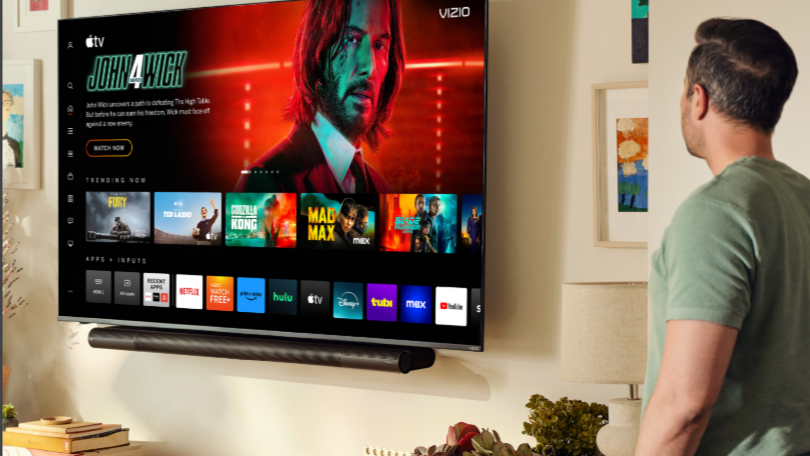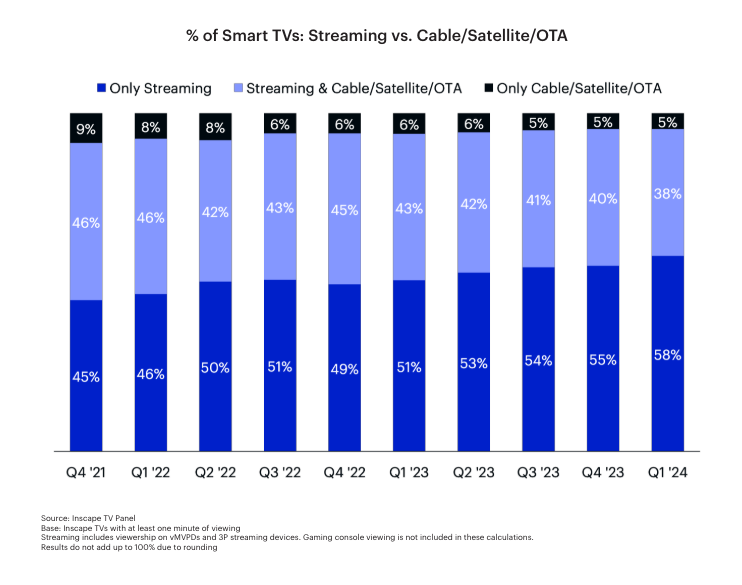
More people are using their smart TVs only to stream content, eschewing antennas and cable hookups, according to a new report from Inscape, set-maker Vizio’s data unit.
At the same time, more of the big-ticket tentpole programming from broadcast and cable is being streamed using smart TV apps including virtual multichannel video programming distributors — like YouTube TV — that can access live, linear broadcast and cable networks
Nearly 25% of the content viewers “must see live” was streamed in Q1, according to Inscape’s 1Q Trends Report.
The number of smart TVs used only for streaming jumped to 58% in Q1 from 55% in Q4 2023, the largest quarterly increase since Q2 2023.
TVs that only accessed content via cable or satellite or over the air remained steady quarter over quarter at 5%.

“To put it bluntly, more than half of smart TVs included in the data did not access any content via cable, satellite or over-the-air antenna (OTA),“ Inscape said. “But that doesn’t mean people are only watching in an on-demand fashion.
“With a variety of apps and devices, smart TVs can access live, linear TV airing on broadcast or cable networks,“ the company added. “In Q1 2024, nearly a quarter of that ‘must-see-live’ content was streamed.”
Although the broadcast and traditional pay TV platforms continue to own the bulk of live, linear viewing, streaming’s share has increased to 24.4% from 15.2%, Inscape said.
Still, traditional TV is still where the bulk of sports (72.3%) and news (79.9%) got watched in Q1. For March Madness specifically, 72.7% of viewing time of the women’s basketball tournament was watched over the air, on cable or satellite. For the men’s tournament, 68.6% was watched via traditionally-delivered TV.
In Q1, 94% of total streaming time was driven by smart TVs that only (66.8%) or mostly (27.1%) streamed content.
After a twofold increase in the average number of apps used per smart TV from 2021 to 2023, usage has leveled off in the last few quarters, with about 5.5 apps being used per TV.
Inscape said this signals a stabilization in TV viewing behavior and a clear limit to how many apps people are willing to use.
The Inscape report is based on data from more than 23 million opted-in Vizio devices.







